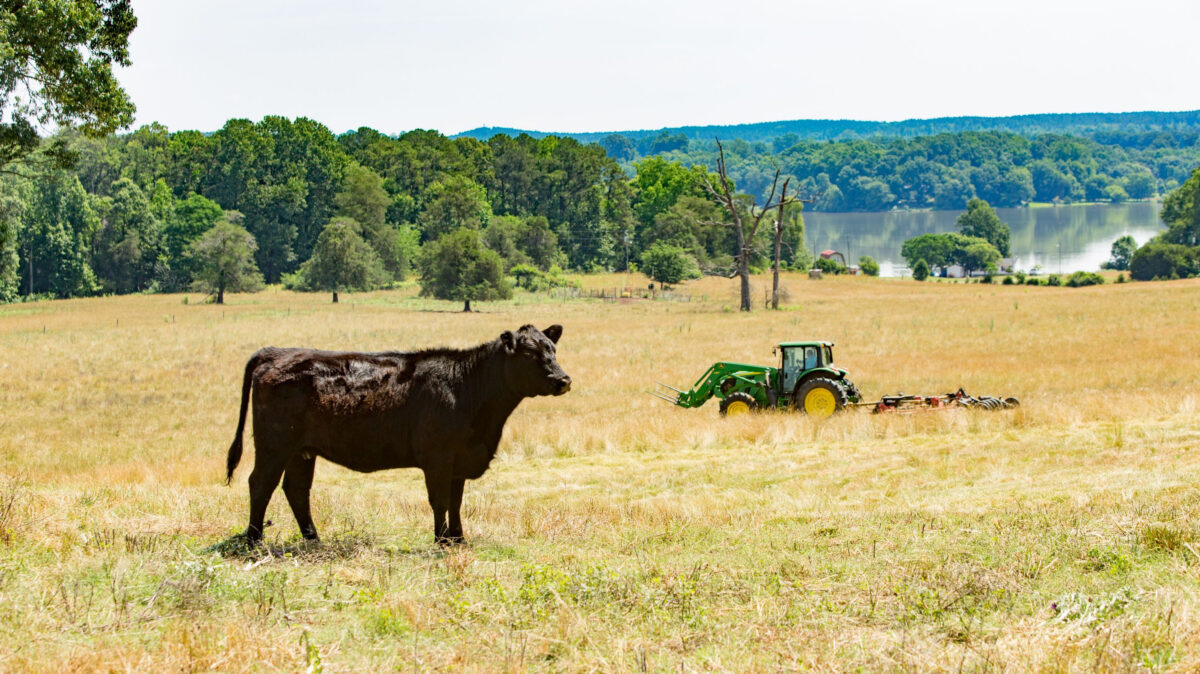Neutral March Cattle on Feed Report Overshadowed by Pandemic Fears
TOPICS
Market IntelMichael Nepveux
Former AFBF Economist

photo credit: AFBF
Michael Nepveux
Former AFBF Economist
USDA’s latest Cattle on Feed report, released March 20, shows the number of animals on feed to be essentially unchanged from 2019. The report provides monthly estimates of the number of cattle being fed for slaughter. For the report, USDA surveys feedlots of 1,000 head or more, as this represents 85% of all fed cattle. Cattle feeders provide data on inventory, placements, marketings and other disappearance.
March Cattle on Feed Report
This report showed a total inventory of 11.806 million head for the United States on March 1. This lack of change year-over-year is right in line with analysts’ expectations of an average increase of 0.2% in feedlot inventories.


As usual, Texas, Kansas and Nebraska lead the way in total fed cattle numbers, accounting for over 7.8 million head, or approximately 66% of the total on-feed inventory in the country. Texas continued to gain year-over-year, adding 6% relative to 2019. Kansas also saw a gain, adding 4% over 2019, but Nebraska reported a 5% decline.
While total inventories are an important component of the report, other key factors include placements (new animals being placed on feed) and marketings (animals being taken off feed and sold for slaughter). Cattle feeders aggressively marketed fed cattle in February, pushing marketings up 5.5% to 1.775 million head, nearly matching the average analyst expectation of a 5.6% increase. The last quarter of 2019 offered decent opportunities for hedging, and some of February’s aggressive marketing may have been hedged cattle. This aggressive marketing could very much continue into March, particularly with whatever remaining cattle have already been hedged.
In terms of placements during February, analysts predicted a sharp decrease of 7.6% from February 2019. However, there was a great degree of uncertainty in analysts’ expectations for the placement number, resulting in a relatively large range of an 11% decrease to a 2.9% decrease. Placements in February totaled 1.711 million head, 7.9% below 2019 levels and even lower than analysts’ predictions. This drastic decline in placements is most likely tied to the current market uncertainty surrounding COVID-19 and the drastic declines in fed cattle cash prices and futures.

With the late summer/early fall live futures contracts showing fed cattle below breakeven for cattle currently being placed, placements in the next Cattle on Feed report may be somewhat dampened as well. Continuing a recent trend of contraction in the overall cattle herd, the decrease in placements will flow through the system, lowering the availability of animals for slaughter later in the year.
Average Cattle Feeding Returns
The uncertainty introduced by COVID-19 has put the brakes on fed cattle prices and ratcheted down profitability for animals that hadn’t been hedged during a more favorable price environment. Increased pressure on feeder cattle prices could offer some respite, but these are still difficult times. Throughout 2019, monthly returns averaged approximately $9.50 per animal. Typically estimated cattle feeding returns are highly variable, and 2019 was no exception, ranging from $181 in December to $-153 in September.

These estimates are not actual returns, but rather a barometer of the general health of the cattle feeding industry. They are calculated using cash prices (no hedging is assumed) and are compiled by the Livestock Marketing Information Center utilizing cash prices and a range of assumptions. Over the previous five years, annual estimated returns averaged -$12.50. 2020 started out with relatively healthy profitability, averaging $150 in the month of January. February profitability was expected to decline somewhat from January even before the impacts of COVID-19, but was still expected to be relatively healthy, with some forecasts putting February returns at over $140 per animal. Ultimately, after fed prices dropped significantly, February returns fell to $85 per animal. Looking forward to the summer, with the August live cattle contract sitting below $90 and break-even levels well above that, we can expect negative returns this summer.
Summary
Overall the March Cattle on Feed report is considered relatively neutral, but the lower placement number will depress production later in the year. The elephant in the room is the impact of COVID-19 and the extreme uncertainty the virus has injected into all aspects of our lives. The tightness of animal numbers and the decline of placements could potentially mean that when (if) things return to normal later in the year, cattle prices could be moving into more bullish territory. However, the impacts of the virus are incredibly difficult to understand at this point in an environment with so much uncertainty. Time will tell what the impact is on the livestock supply chain with many in the country sequestered in their homes and stockpiling goods. We will likely see a shift from food-away-from-home spending to food-at-home spending, and certainly a short-term demand surge at the retail level as a result of stockpiling. How these events ripple through the supply chain will be more difficult to predict.
Top Issues
VIEW ALL